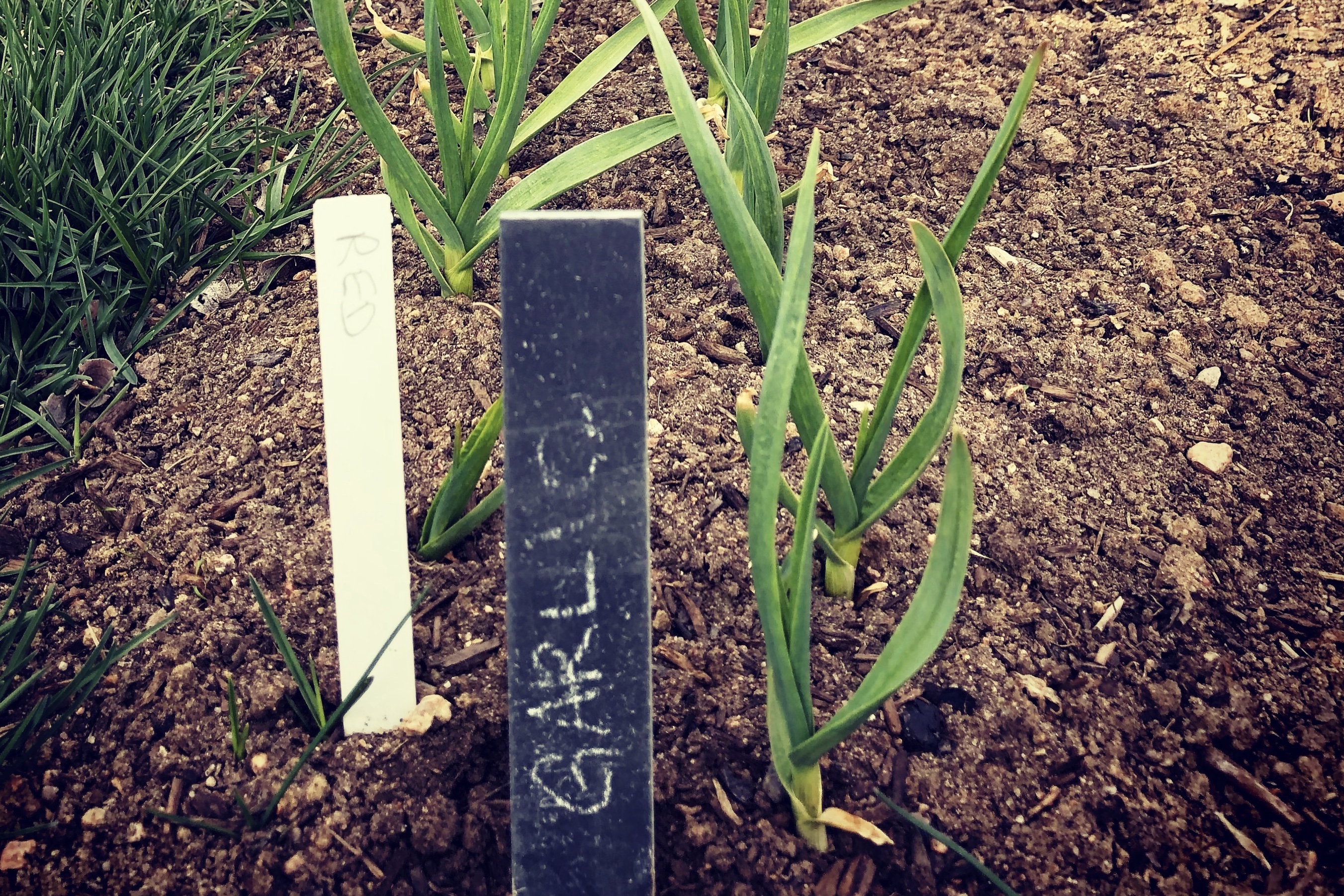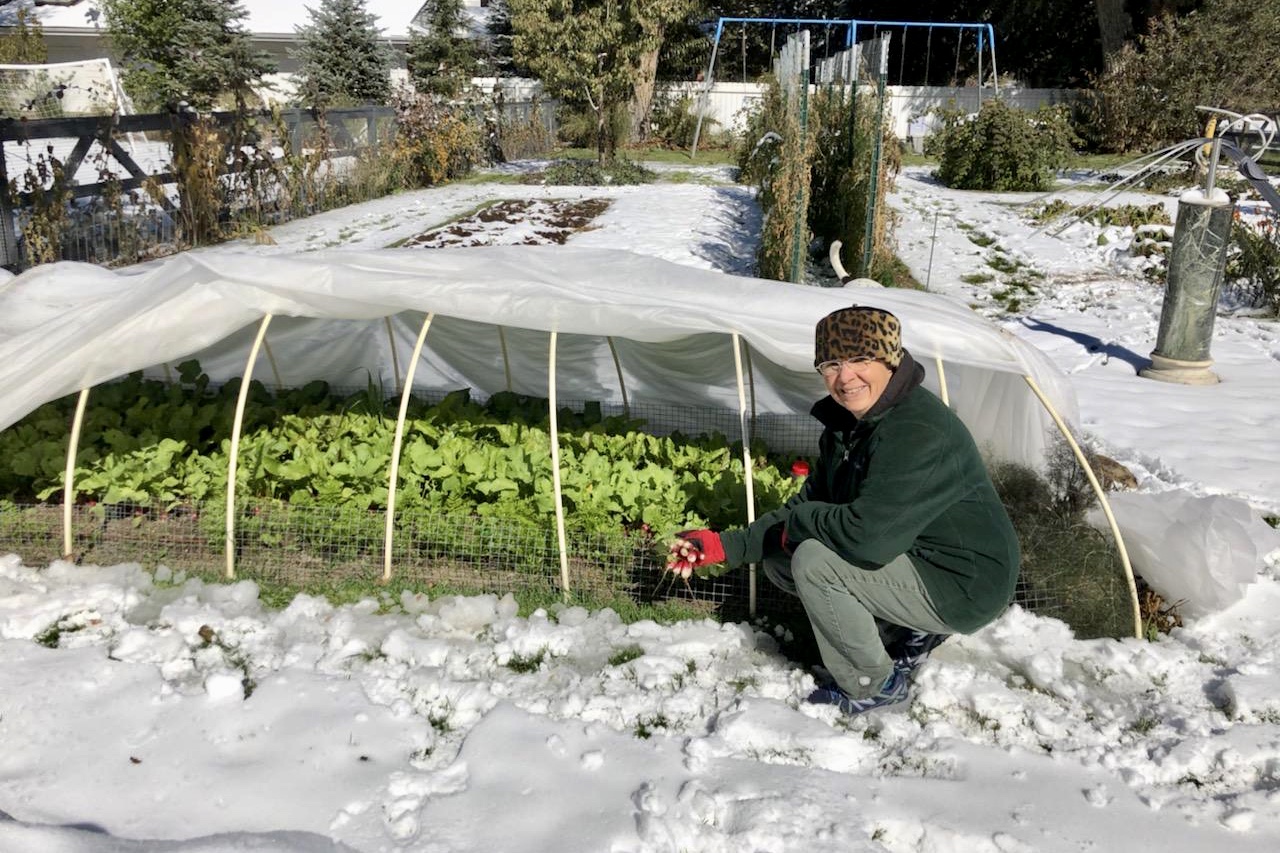
Winterizing the Garden
It’s a Wrap: Preparing the Garden for Winter
Our first autumn snow earlier this month marked the end for most of our summer crops. While temperatures rebounded and warmer days returned, it’s only a matter of time before consistently cold temperatures end the outdoor growing season along the Front Range.
By now most of our crops have been harvested, so it’s the perfect time to turn our attention to the less showy garden work of putting the garden to bed. While Grow + Gather will produce fresh food year-round with our rooftop greenhouse and indoor, hydroponic farm, this month we’ve been getting our dirt farm battened down for winter. Below you’ll find the five steps we take each autumn to clear the way for a successful growing season next spring.
Clean up.
Most of the warm-weather annuals in the open-air garden bid farewell when temperatures plunged below freezing a couple of weeks ago. Even if some annuals have hung on, their productivity is coming to a close.
Margie Frey, Grow + Gather’s seasoned horticulturalist and farm manager, recommends doing the lion’s share of garden clean-up as soon as plants die from a hard frost. She pulls plants, shakes off excess soil, and composts the garden debris, trashing only visibly diseased dead plants and tomato vines, which are notorious for carrying pathogens that aren’t killed off in smaller, less hot compost piles.
Cut back.
Perennial plants are a different matter. While it’s important to prune some perennials like asparagus in the fall to reduce disease risk and help the plant focus its energy on root development, fall pruning is not the answer for most perennials in Colorado. Indiscriminately taking the shears to every perennial may not only damage some of them but also may remove plant matter like prominent seed pods that provide food sources for insects and animals and offer attractive ornamental interest during the winter.
If you’re not a professional gardener or farmer with a large planting load next spring, improve your soil with a less conventional clean-up strategy. This year, instead of ripping out dead plants, roots and all, cut them to the ground and leave the root system intact beneath the soil. As organic gardeners, you spend a lot of time cultivating soil that is teeming with beneficial microorganisms. Keep them fed this winter with these leftover roots. You’ll encourage an active soil biology by maintaining these microorganisms while improving the soil with decomposed roots.
Plant.
The temperatures are dropping, but there’s still time to plant flowering bulbs and garlic before the ground freezes. Also, some flower seeds such as Black-eyed Susans, penstemon and coneflowers need stratification (a period of cold and moisture) to grow well in Colorado.
And if you’re interested in extending the growing season this year, take heart. While Front Range autumn temperature extremes aren’t ideal for open-air growing, with garden weather-proofing, you can successfully cultivate food outdoors through the beginning of winter.

At the microfarm, we grow and harvest beets, carrots, radishes and kale outdoors through December. Each year before the first hard freeze, Margie assembles a simple hoop system over the cool-season garden beds and attaches cold-weather row covers to protect the growing plants. Don’t have the energy to install hoops? Margie says even laying the row cover directly over the plants provides enough insulation to keep them growing.
Protect.
Winter is slim pickings for our local animals, and your exposed plants are fair game to them. Shield appetizing shrubs with fences, and attach tree guards to the trunks of your young trees to deter critters like deer and rabbits from damaging them during their more vulnerable, dormant period.
Prepare for Spring.
No time like autumn to pull perennial weeds that have slowed their growth. By removing them from the roots, you’ll reduce their chances of a garden takeover next spring. After weeding, be sure to mulch around plants to provide insulation for the cold months ahead while further reducing weed-growth potential in the spring.
Now is also a great time to take stock of your garden. Purge broken or damaged gear, sanitize tools and other gardening equipment and organize your garden shed. Inventory your seeds, noting what grew well in your garden and what you’d like to grow next growing season.
And If you haven’t already, check out an earlier post we shared on garden planning tips for helpful strategies on cultivating an even more successful garden next year.
While we’re putting some of our garden to bed, we’re also closing in on an opening date for Grow + Gather and can’t wait to share the space with you. If you haven’t already, follow along on Instagram, Facebook and Twitter for our Grand Opening progress, and sign up here to receive our newsletter on all things Grow + Gather.


